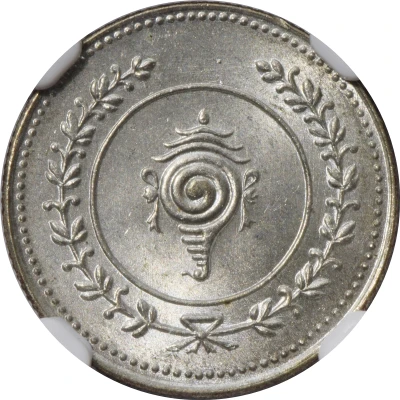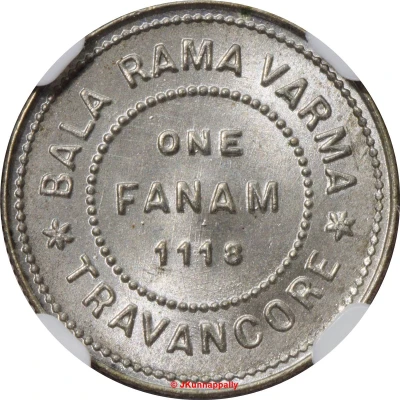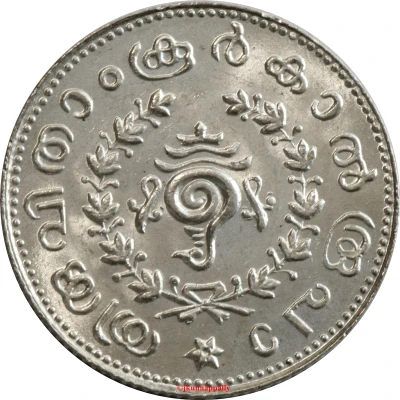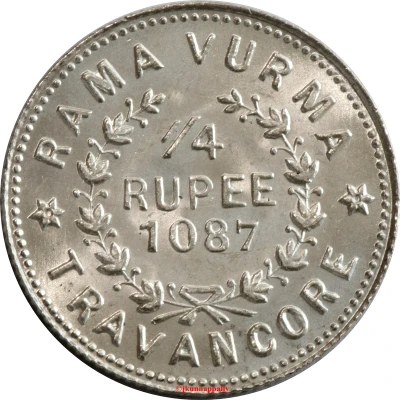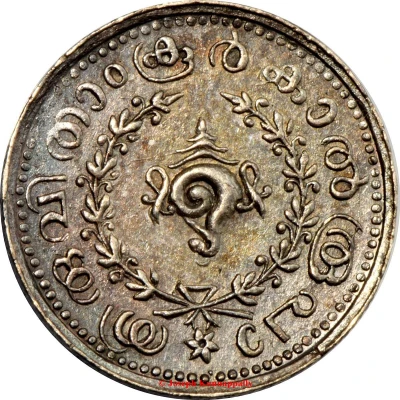
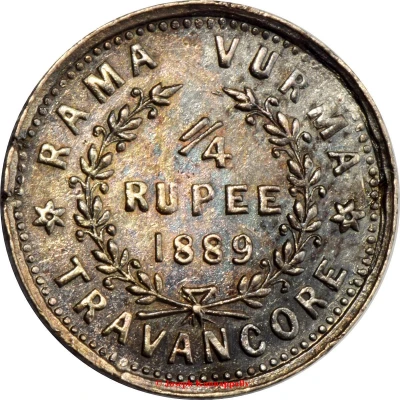

© Joseph Kunnappally
¼ Rupee - Moolam Thirunal Rama Varma VI
1889 year| Silver (.949) | 2.72 g | 20 mm |
| Issuer | Kingdom of Travancore (Indian Hindu Dynasties) |
|---|---|
| Type | Standard circulation coin |
| Year | 1889 |
| Value | ¼ Rupee |
| Currency | Rupee (1729-1947) |
| Composition | Silver (.949) |
| Weight | 2.72 g |
| Diameter | 20 mm |
| Thickness | 1.15 mm |
| Shape | Round |
| Technique | Milled |
| Orientation | Medal alignment ↑↑ |
| Demonetized | Yes |
| Updated | 2024-10-05 |
| Numista | N#38951 |
|---|---|
| Rarity index | 87% |
Reverse
Denomination and date within sprays, legend in English surrounds
Lettering:
RAMA VURMA
1/4 RUPEE
1889
TRAVANCORE
Edge
Reeded
Comment
- Moolam Thirunal Rama Varma was the ruling Maharajah of the Indian state of Travancore between 1885 and 1924, succeeding his uncle Maharajah Visakham Thirunal (1880–1885).Predecessor: Visakham Thirunal Rama Varma
Successor: Pooradam Thirunal Sethu Lakshmi Bayi (Regent)
Born: September 25, 1857
Died: March 7, 1924 (aged 66)
Full name: HH The Maharajah of Travancore Sree Padmanabhadasa Vanchipala Sir Rama Varma VI
House: Venad Swaroopam
Dynasty: Kulasekhara
Father: Changanassery Raja Raja Varma
Mother: Rani Lakshmi Bayi
Religion: Hinduism
Shape of conch shell and size of lettering differs from KM52
Die variations exist (click on images below)
Observed 5-6 different dies for obverse & reverse each used to make these quarter rupee coins. These obverse & reverse dies are used in various combinations also. This way found atleast 13 different die combination coins so far. These are given below in 3 images.
Image 1 - 5 Main types
Image 2 - Type III - 5 Varieties
Image 3 - Type IV - 5 Varieties
Interesting fact
One interesting fact about this coin is that it features a unique blend of Indian and European influences in its design. The obverse side of the coin bears the image of Moolam Thirunal Rama Varma VI, the ruler of the Kingdom of Travancore, in a traditional Indian style, while the reverse side features a Western-style wreath surrounding the denomination and year of issue. This blending of styles reflects the cultural exchange and influences that were prevalent during the time period in which the coin was minted.
